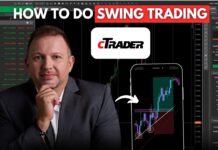
Have you ever wonder about the Forex market history? Do you know how it all started and when? The foreign exchange market was very different years ago and I believe you will find the information below really interesting.
Overview
- Until the 1970s or so, currency trading was limited mostly to the needs of large companies conducting business in multiple countries.
- Trading for investment and speculative purposes was not widely practised at this time, and most trading was centered on commodities and individual stocks.
The Bretton Woods Accord – Courting Controversy
- After World War II, economies in Europe were left in tatters.
- To help these economies recover – and to avoid mistakes made in the wake of the First World War – the Bretton Woods Accord was convened in July 1944.
- Several resolutions arose from Bretton Woods, but it was the “pegging” of foreign currencies to the U.S. dollar that arguably had the greatest immediate impact on the global economy.
Fiat or Floating Currency – Fiat currency is the opposite of a gold standard arrangement. In a fiat currency system, the currency’s value rises and falls on the market in response to demand and supply pressures. It is this fluctuation that makes it possible to speculate on future currency values.
The Bretton Woods Agreement, established in 1944, fixed national currencies against the dollar, and set the dollar at a rate of 35USD per ounce of gold.
In 1967, a Chicago bank refused to make a loan in pound sterling to a college professor by the name of Milton Friedman because he had intended to use the funds to short the British currency. The bank’s refusal to grant the loan was due to the Bretton Woods Agreement.
This agreement aimed at establishing international monetary steadiness by preventing money from taking flight across countries, and curbing speculation in the international currencies.
Prior to Bretton Woods, the gold exchange standard – dominant between 1876 and World War I – ruled over the international economic system. Under the gold exchange, currencies experienced a new era of stability because they were supported by the price of gold.
However, the gold exchange standard had a weakness of boom-bust patterns. As an economy strengthened, it would import a great deal until it ran down its gold reserves required to support its currency.
As a result, the money supply would diminish, interest rates escalate and economic activity slowed to the point of recession.
Ultimately, prices of commodities would hit bottom, appearing attractive to other nations, who would sprint into a buying fury that injected the economy with gold until it increased its money supply, driving down interest rates and restoring wealth into the economy.
Such boom-bust patterns abounded throughout the gold standard until World War I temporarily discontinued trade flows and the free movement of gold.
The Bretton Woods Agreement was founded after World War II, in order to stabilize and regulate the international Forex market.
Participating countries agreed to try to maintain the value of their currency within a narrow margin against the dollar and an equivalent rate of gold as needed. The dollar gained a premium position as a reference currency, reflecting the shift in global economic dominance from Europe to the USA.
Countries were prohibited from devaluing their currencies to benefit their foreign trade and were only allowed to devalue their currencies by less than 10%. The great volume of international Forex trade led to massive movements of capital, which were generated by post-war construction during the 1950s, and this movement destabilized the foreign exchange rates established in the Bretton Woods Agreement.
1971 heralded the abandonment of the Bretton Woods in that the US dollar would no longer be exchangeable into gold. By 1973, the forces of supply and demand controlled major industrialized nations’ currencies, which now floated more freely across nations. Prices were floated daily, with volumes, speed and price volatility all increasing throughout the 1970s, and new financial instruments, market deregulation and trade liberalization emerged.
The onset of computers and technology in the 1980s accelerated the pace of extending the market continuum for cross-border capital movements through Asian, European and American time zones. Transactions in foreign exchange increased intensively from nearly $70 billion a day in the 1980s, to more than $1.5 trillion a day two decades later.
Pegging U.S. Currencies to the U.S. Dollar
- By pegging (or linking) these currencies directly to the dollar, the value of the pegged currencies remained dependent on the value of the dollar.
- At the same time, the value of the dollar was tied to the price of gold which, at the time of the Bretton Woods Accord, was valued at $35 an ounce.
- The U.S government was obligated to maintain gold reserves equal to the amount of currency in circulation, making the United States a true gold standard economy.
Evolution of an Open Forex Market
Why We Have Richard Nixon to Thank
- It did not take long for cracks to appear in the Bretton Woods Accord.
- For the pegged currencies, it was impossible for individual countries to manage the value of their own currency.
- Likewise, the value of the dollar itself was subject to fluctuations in the price of gold.
- As resistance grew to the restrictions imposed by the original agreement, two events in particular would spell the end of the Bretton Woods Agreement.
The Bretton Woods Accord was not popular with every country included in the agreement. By linking many European economies to the U.S. dollar, the dollar became the de facto world currency. This made it impossible for sovereign nations to manage the value of their own currency.
Some U.S. officials were likewise unhappy with tying the U.S. dollar to the price of gold. With this arrangement, a run-up in gold prices also forced the value of the dollar upwards, and this contributed to the inflation crisis of the early 1970s.
The Eurodollar Market
- The first attack on Bretton Woods came in the form of what would be known as the Eurodollar market.
- The term “eurodollar”, defines any instance of U.S. dollars deposited in a bank outside the United States – initially, the source of much of the foreign-held dollars was oil.
- The Soviet Union became an important oil producer shortly after World War II, and because oil contracts sold on the international markets were settled in U.S. dollars, the Soviet Union started receiving huge amounts of U.S. currency.
- Coincidently, this period also marked the beginning of the “Cold War” between the east and the west.
- Worried that their bank accounts could be seized by the U.S., the Soviet Union opted to deposit its U.S. dollars in European banks, out of the reach of American authorities.
- As the number of U.S. dollars held in this new eurodollar market grew, it soon became an important source of lending capital for governments and large companies around the world.
Market-Maker – A dealer or broker that provides a two-way quote (i.e. a bid and ask price) for which the dealer agrees to buy or sell. Offering both sides of a trade literally “makes” a market for those wishing to engage in currency trading.
The rapid development of the Eurodollar market, where US dollars are deposited in banks outside the US, was a major mechanism for speeding up Forex trading. Likewise, Euro markets are those where assets are deposited outside the currency of origin.
The Eurodollar market first came into being in the 1950s when the Soviet Union’s oil revenue – all in US dollars – was being deposited outside the US in fear of being frozen by US regulators. That gave rise to a vast offshore pool of dollars outside the control of US authorities.
The US government imposed laws to restrict dollar lending to foreigners. Euro markets were particularly attractive because they had far fewer regulations and offered higher yields.
From the late 1980s onwards, US companies began to borrow offshore, finding Euro markets an advantageous place for holding excess liquidity, providing short-term loans and financing imports and exports.
London was and remains the principal offshore market. In the 1980s, it became the key center in the Eurodollar market when British banks began lending dollars as an alternative to pounds in order to maintain their leading position in global finance.
London’s convenient geographical location (operating during Asian and American markets) is also instrumental in preserving its dominance in the Euro market.
U.S. Inflation and the Energy Crisis
- In 1971, inflation in the U.S. continued to erode the purchasing power of the dollar. At the same time, an energy crisis was simultaneously pushing up the price of oil and other commodities.
- As a result, investors – as is often the case when confusion reigns in the markets – turned to gold as a hedge to protect savings.
- The increased demand caused gold prices to soar and because the dollar was tied to gold, the U.S. dollar followed suit, further exacerbating the inflationary pressures.
- Finally, in an attempt to deal with surging inflation in the U.S. economy, President Nixon dropped the gold standard requirement and devalued the U.S. dollar to 1/35th of an ounce of gold.
- This effectively ended not only the gold standard, but also the Bretton Woods-imposed pegging of currencies, leading ultimately to free-floating individual currencies based on market conditions and other economic factors.
A hedge is the practice of buying a physical commodity to protect against a possible currency devaluation.
The Interbank Market and OTC Trading
- Sometimes referred to as institutional forex trading, the Interbank market consists of a small group of large banks. Non-bank outsiders are forced to pay high service fees to trade in this market.
- Forex trading is an “over-the-counter” (OTC) market, and is not conducted in a physical location such as a stock exchange.
- A forex deal exists as a contract between two parties.
Exchange-Based Trading
- The Chicago Mercantile Exchange (CME) became the first exchange to offer currency trading.
- In 1971, the CME launched the International Monetary Market (IMM).
The Rise of Web-Based Trading and Forex Market-Makers
- In recent years, new developments in web-related technologies have made it possible for a number of independent brokers to develop internet-based trading platforms.
- These brokers serve as market-makers and provide a two-way quote for each currency pair they support.
Sources: http://www.easy-forex.com/ | http://oanda.com














Thanks guys glad you enjoyed
Thanks for sharing Forex market history . The info you have posted is really really informative.Keep posting such interesting articles.
Interesting…….
Great article..so now I know the history and its origin 🙂
History always marks its importance….nice choice of article